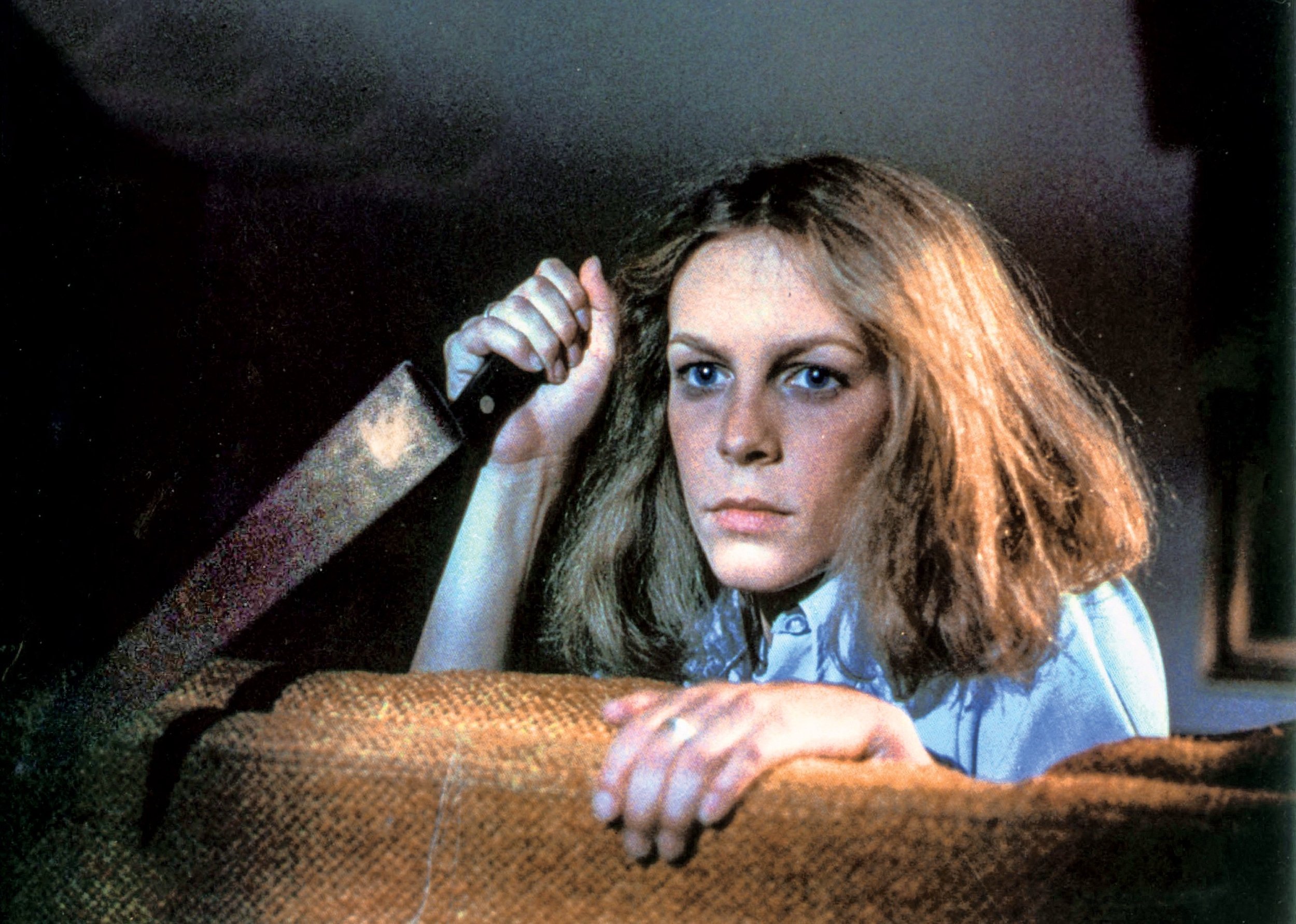The Evolution of Final Girl Fashion: From Horror Films to Japanese Video Games

The Evolution of Final Girl Fashion: From Horror Films to Japanese Video Games
In the realm of horror, the "Final Girl" stands as an iconic figure, representing resilience, courage, and some sex appeal. Coined by Carol J. Clover in her seminal work; Men, Women, and Chainsaws, “Final Girl”, describes the last woman standing in horror films, who confronts the killer and often emerges victorious. Beyond her narrative significance, the Final Girl's fashion plays a crucial role in defining her character and the thematic elements of the story. Exploring the evolution of Final Girl fashion, we dive deeper with a particular focus on the influence of horror films and Japanese video games.
The Final Girl typically starts as an ordinary, often underestimated, character who undergoes a dramatic transformation. Her journey from vulnerability to empowerment is frequently mirrored in her attire. In classic slasher films of the 1970s and 1980s, such as "Halloween" (1978) and "A Nightmare on Elm Street" (1984), the Final Girl's fashion is functional yet symbolic. Laurie Strode from "Halloween," for example, begins in modest, everyday clothing—a symbol of her innocence and relatability. As the story unfolds, her attire becomes blood-stained and tattered, visually representing her fight for survival and the loss of innocence. Similarly, Nancy Thompson from "A Nightmare on Elm Street" transitions from casual, comfortable clothing to a more comfortable and “battle-ready” outfit, signifying her readiness to confront Freddy Krueger. These sartorial choices highlight the Final Girl's transformation from an ordinary teenager to a warrior, prepared to face her fears head-on.
The Influence of Japanese Horror Video Games
Japanese horror video games have significantly contributed to the Final Girl archetype, adding unique cultural and stylistic elements to the narrative and visual presentation. Games like "Fatal Frame," "Resident Evil," and "Silent Hill" feature strong female protagonists whose fashion choices reflect their resilience.
"Silent Hill 3" (2003) offers a compelling example with its protagonist, Heather Mason. Heather's fashion is distinctly practical yet evocative, blending everyday teenage attire with elements that suggest both fragility and fortitude. She wears a sleeveless white vest, an orange hoodie tied around her waist, a short khaki skirt, and brown boots—an ensemble that is both functional for movement and symbolically rich. Shingo Yuri, the character designer, found influence in French “it” girls like Charlotte Gainsbourg and Sophie Marceau for her look which started out as something sweet, to then evolved into something edgy.
Heather's clothing conveys her everywoman status, making her relatable to the player. The white vest, often stained with blood and dirt as the game progresses, signifies her struggle and the physical toll of her journey. The orange hoodie adds a touch of colour, perhaps hinting at a semblance of normalcy she clings to amidst the chaos. Her boots and skirt combination suggests a blend of practicality and femininity, underscoring her dual role as a vulnerable young woman and survivor.
Heather's fashion in "Silent Hill 3" serves not only to define her character but also to enhance the game's atmosphere. The contrast between her relatively normal attire and the grotesque horrors she faces heightens the sense of dread and suspense, a hallmark of the survival horror genre.
In many narratives, the final girl’s clothing serves as a visual metaphor for her psychological journey. As the story progresses, her attire may become more dishevelled and damaged, mirroring the physical and emotional challenges she endures. In Japanese horror video games, this thematic use of fashion is particularly pronounced. Protagonists like Miku Hinasaki in "Fatal Frame" and Jill Valentine in "Resident Evil" undergo similar transformations. Miku's traditional Japanese attire contrasts starkly with the ghostly apparitions she confronts, while Jill's tactical gear in later games of the "Resident Evil" series highlights her evolution from a rookie cop to a seasoned zombie fighter.
The Role of Fashion in Building Tension
Fashion in horror serves as a tool for building tension and enhancing the narrative. The Final Girl’s attire often starts as mundane, grounding the character in a relatable reality. As the horror elements intensify, the transformation of her clothing into a battle-worn state visually amplifies the stakes.
In "Silent Hill 3," Heather's evolving appearance is a constant reminder of the game's oppressive atmosphere and the relentless nature of the horror she faces. Each bloodstain and tear in her clothing is a testament to her survival against the grotesque creatures of Silent Hill. This visual storytelling technique is crucial in maintaining player immersion and emotional investment.
“The Final Girl is boyish, in a word. Just as the killer is not fully masculine, she is not fully feminine — not, in any case, feminine in the ways of her friends. Her smartness, gravity, competence in mechanical and other physical matters, and sexual reluctance set her apart from the other girls.” — Carol J. Clover, Men, Women, and Chain Saws: Gender in the Modern Horror Film
Cultural context plays a significant role in shaping Final Girl fashion. In Western horror films, the Final Girl's attire often reflects contemporary youth culture, aiming for relatability and authenticity. Conversely, Japanese horror video games infuse cultural nuances that add depth to the protagonist's characterization. For instance, Miku's kimono in "Fatal Frame" is not merely a costume but a symbol of her connection to Japanese tradition and the supernatural. This cultural specificity adds layers to her character and enriches the narrative, making the horror elements more impactful for players familiar with these cultural references.
Modern Interpretations and Trends
In recent years, Final Girl fashion has continued to evolve, reflecting broader changes in society and the horror genre. Modern Final Girls, such as Sidney Prescott in the "Scream" series and Mia Allen in the "Evil Dead" reboot, display a blend of traditional and contemporary elements in their fashion.
Sidney's fashion in "Scream" evolves from casual 90s attire to more practical and resilient clothing, mirroring her growth from a high school student to a savvy fighter. Mia's transition from a possessed victim to a chainsaw-wielding hero in "Evil Dead" is visually marked by her increasingly rugged and bloodied appearance.
The fashion of the Final Girl is a dynamic and integral aspect of horror storytelling, embodying themes of survival, resilience, and transformation. The evolution of Final Girl fashion reflects the changing landscape of horror and the diverse influences of film and video games. As the horror genre continues to evolve, the Final Girl's fashion will undoubtedly adapt, continuing to captivate and terrify audiences with its powerful visual storytelling.
words by Words: Viona Charles








